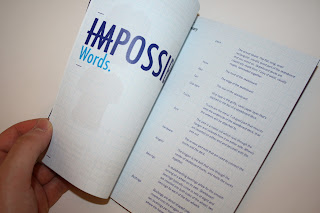7 Habits of highly effective people
Lawrence Kohlburn
Karl Hopkins - local millionaire > investor in new creative business
1. PROACTIVITY
> natural aptitude of humans.
stimulus > response - animals.
stimulus >
choice > response - humans
Natural aptitude of humans in order to protect/make things easier.
should be looking to expand sphere of influence.
Meet people - talk - keep them interested. Be proactive.
will help to expand your sphere of influence.
> internal environments
- your skills
- your responses
- your lifestyle.
> micro environment (need to work on this)
- Network of friends & associates
- your competitors
- your suppliers.
> Macro environment
2. PROJECT
- Develop a vision of the future
- Create a principle - centered personal mission statement.
- Extend the mission into long term goals.
Tell people about your aims & there's more chance of you finding out how.
"life is what happens while you are busy making other plans"
John Lennon
3. PROVIDE
- clear explanations to people - concise
- speak in their language
- inspire people with your creativity
offer more than is expected.
say what you can do for a client in order to help change their business
4. PRIORITISE
- put first things first
- keep a proper balance
- stick to your personal mission
think about what you want most and think about how best to apply your time in order to achieve this.
5. PRESENTS
- think - win/win
- seek outcomes and relationships that are mutually beneficial
- do a favour to gain a favour.
> make sure you are working with people that will be beneficial in the long run.
> build relationships & be clear of the benefits.
Carl Hopkins
networking
Kohlberg's theory.
Pre-conventional
- I want
- Why should I?
- Nobody listens
- short term
like a child
dependent
Conventional
- I would be happy to
- your needs
- I understand
- Medium term
Starting business
Independent
Post-conventional
- we can
- together
- mutual benefit
- long term
inter dependent
6. PAUSE
- stop to listen - give all your attention - give yourself to the moment.
- emphasise - walk in someones shoes
- Don't reiterate or interpret - just listen
- do you really know how they feel or are you just saying you do...
> seek first to understand ; then be understood
> learn from your differences
7. PROVEN
consistency
integrity } they deliver consistency . trust in a business
reliability
you know what you expect to get
chanel > coca-cola > Frank Garey
if service changes it will be the last time you use it.
you seek to achieve consistency.
Steinway & sons > Andrew Goldsworthy > Jimmy Chu
8. PARTNER
synergy multiplies your talents.
work with other experts outside your field to achieve greatness.
James Dyson > Antony Gormley > Michelangelo > Everest expeditions > Damien Hirst.
Greatness never happens without collaboration.
Have the idea > and find the best specialist to execute the idea.
Hollywood model - 600-800 credits for Avatar
All freelance that come together for one project.
9. PIT STOP
- sharpen up - bolt on, get new stuff
- rest -renew - re-vitalise
- explore - challenge - excite.
Take time out to think, question, improve, challenge what you're doing.
Always look to improve.
- when looking for jobs - always look for how it will better you and be beneficial, training wise.
10. PROPEL
- extinguish your fears
- exude confidence
- instill faith
never use the words 'just' or 'only' when trying to describe yourself
just say what you are and be proud of what you're achieving





































